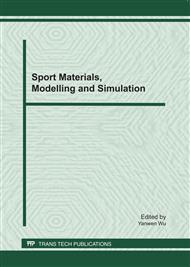p.377
p.383
p.389
p.394
p.399
p.405
p.411
p.416
p.422
Chaos Study on Evolutionary Simulation in Multi-Agent System
Abstract:
Agents' evolutionary behavior in a multi-agent system, which will generate chaotic phenomena, can be used in studying chaos system in natural environment system. The paper simulated the process of belief transfer and bidirectional, innovational transfer among agents, and proposed a new concept of chaotic basic wave and a ZP model. Through some experiments, the paper concluded that the agent group with bidirectional and innovational transfer phenomena could keep the number of their belief types in a steadily chaotic status, and this chaotic steady status will not be affected by some variables of the system in a macroscopic view.
Info:
Periodical:
Pages:
399-404
Citation:
Online since:
February 2011
Keywords:
Price:
Сopyright:
© 2011 Trans Tech Publications Ltd. All Rights Reserved
Share:
Citation:


